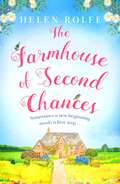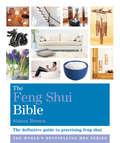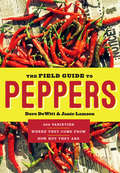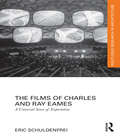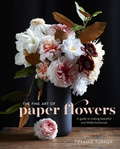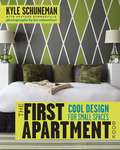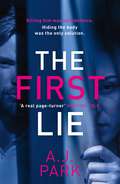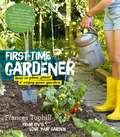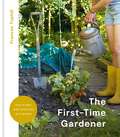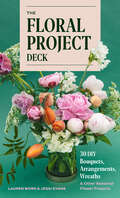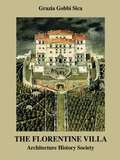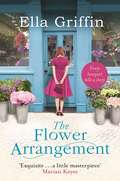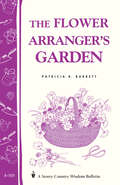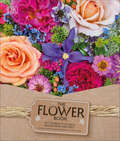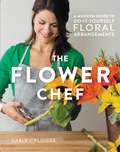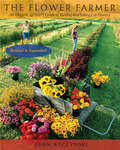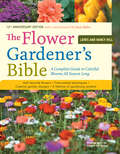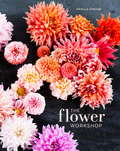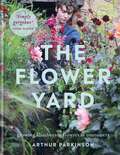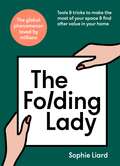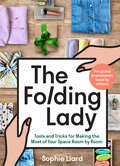- Table View
- List View
The Farmhouse of Second Chances: A gorgeously uplifting story of new beginnings!
by Helen Rolfe'A heartwarming story about family, forgiveness and the importance of kindness' FIONA HARPER on The Kindness Club on Mapleberry Lane'Comforting and uplifting, this book is a joy to read' MY WEEKLY'A heartwarming tale' WOMAN'S OWNHome is where the heart is... Joy has made a family for herself. She's turned her beautiful old farmhouse into a safe haven for anyone who is looking for a new beginning. She's always ready with a kind word, a nugget of advice and believes that anyone can change their life for the better, if they really want to. Libby has exchanged her high-flying job in New York for a break in the quiet Somerset countryside. She's soon drawn into Joy's world and into her family of waifs and strays - including Drew, whom Joy once helped get back on his feet. So when a secret from Joy's past threatens everything, can the unlikely group come together to give Joy a second chance of her own? Curl up with this uplifting new story of second chances and finding where you belong, from the author of The Little Village Library, perfect for fans of Cathy Bramley and Ali McNamara!***Readers adore Helen's heartwarming storytelling'Enchanting... Employing all the warmth and charm of Maeve Binchy, and a special brand of kindness that she has made her own, Rolfe weaves together elements of mystery, romance, family relationships and the warmth of community in a story guaranteed to bring laughter, tears and miles of smiles' Lancashire Post'A warm, comforting tale of family and community which brims with kindness and love' Annie Lyons'A heartwarming story about family, forgiveness and the importance of kindness... If you're looking for a feelgood novel in these difficult times, this is definitely it!' Fiona Harper'A lovely community, full of friendship and love''I enjoyed every minute of this book and found it very hard to put down''Lovely, feel-good...filled with lots of love''Gave you all the emotions: suspense, happiness and excitement''Helen Rolfe's writing brought a smile to my face''Loved loved loved this fabulous book'
The Feng Shui Bible: Godsfield Bibles
by Simon G. BrownFrom understanding the basic principles of feng shui to mastering floor plans and using remedies to cure real-life problems, this definitive guide covers everything you need to know about this ancient art. It includes advice on moving house, tailoring feng shui to your personal requirements, choosing furnishings and deciding when to redecorate.The comprehensive directory shows you how you can apply feng shui to every aspect of your life - including your home, health, relationships, finances, career and spiritual life - to help you achieve your full potential, take control of your destiny and create a happier atmosphere at home.
The Feng Shui Bible: Godsfield Bibles (Godsfield Bibles)
by Simon G. BrownFrom understanding the basic principles of feng shui to mastering floor plans and using remedies to cure real-life problems, this definitive guide covers everything you need to know about this ancient art. It includes advice on moving house, tailoring feng shui to your personal requirements, choosing furnishings and deciding when to redecorate.The comprehensive directory shows you how you can apply feng shui to every aspect of your life - including your home, health, relationships, finances, career and spiritual life - to help you achieve your full potential, take control of your destiny and create a happier atmosphere at home.
The Field Guide to Peppers: 400 Varieties - Where They Come From - How Hot They Are
by Dave DeWitt Janie LamsonThe essential guide for pepper enthusiasts! A little spice can really take a meal to the next level—but with so many peppers to choose from, how do you pick one capsicum from another? In The Field Guide to Peppers, Dave DeWitt and Janie Lamson give expert advice on popular varieties like ancho, cayenne, jalapeño, serrano, and more. The 400 profiles in this fiery guide include all the major types of peppers, and each page features a color photograph along with all the details a pepperhead needs to know: common name, origin, source, pod length and width, plant height, color, harvest, and heat level, ranging from sweet to superhot.
The Films of Charles and Ray Eames: A Universal Sense of Expectation (Routledge Research in Architecture)
by Eric SchuldenfreiThe Films of Charles and Ray Eames traces the history of the Eameses’ work, examining their evolution away from the design of mass-produced goods and toward projects created as educational experiences. Closely examining how the Eameses described their work reveals how the films and exhibitions they generated were completely at odds with the earlier objectives exemplified in their furniture designs. Shifting away from promoting the consumer-culture, they turned their attention to the presentation of complex sets of scientific, artistic, and philosophical ideas. During a critical period from the late 1950s to the early 1960s there was a moment of introspective self-reflection in the West stemming from the events of the Cold War. This moment of uncertainty was crucial, for it provided the incentive to question the values and concerns of society as a whole. In turn, designers began to question their own sense of purpose, temporarily expanding the purview of design to a broader field of inquiry. In the case of the Eameses, they identified an overriding problem related to consumerism and excess in America and sought to resolve the issue by creating a network of communication between universities, governments, institutions, and corporations. The solution of promoting greater education experiences as an alternative to consumerism in America required that different sectors of society functioned in unison to address political, social, economic, and educational concerns. The Films of Charles and Ray Eames reconsiders how design intersects with humanity, culture, and the sciences.
The Fine Art of Paper Flowers: A Guide to Making Beautiful and Lifelike Botanicals
by Aya Brackett Tiffanie TurnerAn inspiring, practical and gorgeous guide to crafting the most realistic and artful paper flowers for arrangements, art, décor, wearables and more, from San Francisco botanical artist Tiffanie Turner. The Fine Art of Paper Flowers is an elevated art and craft guide that features complete step-by-step instructions for over 30 of Tiffanie Turner’s widely admired, unique, lifelike paper flowers and their foliage, from bougainvillea to English roses to zinnias. In the book, Turner also guides readers through making her signature giant paper peony, shares all of her secrets for special paper treatments, candy-striping, playing with color and creating botanical imperfections, and shows how to turn paper flowers into gorgeous garlands, headdresses, bouquets and more. These stunning creations can be made from simple and inexpensive materials and the book's detailed tutorials and beautiful photography make it easy to achieve dramatic and lifelike results.
The First Apartment Book: Cool Design for Small Spaces
by Kyle SchunemanBreak out of the white-walled world of first apartments and tap in to your blue-sky decorating dreams with star designer Kyle Schuneman's smart, bold ideas for any budget. First apartments are so exciting because you can finally do what you want with your own space, but they can be tricky to decorate. Kyle Schuneman knows that a paper-thin wallet and four plain walls don't have to stand between you and your perfect home. Kyle, 26, is a decorating prodigy who has designed first apartments for friends, clients, and himself, braving logic-defying floor plans, space-challenged rooms, and picky landlords. In The First Apartment Book, Kyle shares brilliant design ideas and thirty simple DIY projects that show how anyone can infuse a first home with personality whether you're renting, moving in with a roommate or significant other for the first time, or are a newly minted owner eager to put your stamp on your place. The First Apartment Book is both a tour of amazing photographs from ten real homes across the country and a hardworking resource of great ideas. Kyle explains how each of the featured apartments achieves the perfect balance between cool design and the homeowner's lifestyle, with a sprinkling of influences from the resident's city thrown in. Kyle scours flea markets for functional pieces with personality and incorporates Pollock-inspired art and touches of taxicab yellow to make a small studio in New York City function as four different yet coherent rooms. o Graffiti-like dip-dye curtains and a skateboard table reflect a Seattle renter's hip sensibility. In Cleveland, Kyle creates a modern preppy space for a plaid-loving local using subdued colors and careful pattern mixing. A couple's salon-style hanging of rock posters in Nashville feels utterly unique, and Kyle's clever ideas for storing to store their musical instruments keep the duo sane. Short on time and long on style, the thirty DIY projects include no-sew pillows, yarn-wrapped picture frames, and a dresser update using a little glue and fabric. Full of bold, vibrant photos and hundreds of big ideas for small spaces, The First Apartment Book proves that no matter what your landlord, your floor plan, or your wallet says, there are no limits on how cool your first apartment can be.
The First Lie: An addictive psychological thriller with a shocking twist
by A. J. ParkThe most gripping psychological thriller you'll read this year - perfect for fans of Lisa Jewell, Mark Edwards, Claire McGowan, TM Logan and KL Slater...'This is a real page turner. I finished it in one go!' - MARTINA COLE'A.J. Park is a master of suspense who knows how to keep readers hovering tensely over the edges of their seats' - SOPHIE HANNAH******************A freak accident. An impossible choice. But what was...THE FIRST LIE?When Paul Reeve comes home to find his wife in the bathroom, bloodied and shaking, his survival instinct kicks in.Alice never meant to kill the intruder. She was at home, alone, and terrified. She doesn't deserve to be blamed for it. Covering up the murder is their only option.But the crime eats away at the couple and soon they can't trust anyone - even one another...******************Praise for THE FIRST LIE:'A great thriller that will keep you turning the pages well into the night' LUCA VESTE'Twisty, layered and compelling. A genuine page-turner' MW CRAVEN'Tightly plotted, well-drawn characters and an edge of your seat page-turner' CATHY KELLY'Splendildy twisty, it keeps its secrets until the final pages' DAILY MAIL
The First Lie: An addictive psychological thriller with a shocking twist
by A. J. ParkThe most gripping psychological thriller you'll read this year - perfect for fans of Lisa Jewell, Mark Edwards, Claire McGowan, TM Logan and KL Slater...'This is a real page turner. I finished it in one go!' MARTINA COLE'A.J. Park is a master of suspense who knows how to keep readers hovering tensely over the edges of their seats' SOPHIE HANNAH*****THEY HID THE BODY. THEY KEPT THE SECRET. BUT WHAT WAS THE FIRST LIE?When Paul Reeve comes home to find his wife in the bathroom, bloodied and shaking, his survival instinct kicks in.Alice never meant to kill the intruder. She was at home, alone, and terrified. She doesn't deserve to be blamed for it. Covering up the murder is their only option.But the crime eats away at the couple and soon they can't trust anyone - even one another...*****Praise for THE FIRST LIE:'A great thriller that will keep you turning the pages well into the night' LUCA VESTE'Twisty, layered and compelling. A genuine page-turner' MW CRAVEN'Tightly plotted, well-drawn characters and an edge of your seat page-turner' CATHY KELLY'Splendidly twisty, it keeps its secrets until the final pages' DAILY MAIL
The First-Time Gardener
by Frances TophillAlthough excited by the prospect of moving into their own home for the first time, many people are mystified by the prospect of what to do with their outdoor space. Frances Tophill's fuss-free, practical guide shows you how to create a space outside your own back door that's designed by you, built by you and enjoyed by you. Beginning with advice on getting to know your garden - what type of soil you have, what the drainage and light is like - then on getting to know yourself as a gardener - do you want a vegetable patch, an abundance of flowers or simply an extension of your indoor living space? - and then moving on to the practical design, including hard and soft landscaping and building materials and guidance, Frances guides you through different types of plants and how to source and plant them. There is also a section on aftercare, telling you the best way to keep your garden well cared for and easy to maintain throughout the year.
The First-Time Gardener
by Frances Tophill'A brilliant and inspirational starter kit for anyone who wants to make a garden to suit their own needs.' - Alan TitchmarshAlthough excited by the prospect of moving into their own home for the first time, many people are mystified at the thought of what to do with their outdoor space. Frances Tophill's fuss-free, practical guide shows you how to create a space outside your own back door that's designed by you, built by you and enjoyed by you. Beginning with advice on getting to know your garden - what type of soil you have, what the drainage and light is like - then on getting to know yourself as a gardener - do you want a vegetable patch, an abundance of flowers or simply an extension of your indoor living space? - and then moving on to the practical design, including hard and soft landscaping and building materials and guidance, Frances guides you through different types of plants and how to source and plant them. There is also a section on aftercare, telling you the best way to keep your garden well cared for and easy to maintain throughout the year.
The First-Time Gardener
by Frances Tophill'A brilliant and inspirational starter kit for anyone who wants to make a garden to suit their own needs.' - Alan TitchmarshAlthough excited by the prospect of moving into their own home for the first time, many people are mystified at the thought of what to do with their outdoor space. Frances Tophill's fuss-free, practical guide shows you how to create a space outside your own back door that's designed by you, built by you and enjoyed by you. Beginning with advice on getting to know your garden - what type of soil you have, what the drainage and light is like - then on getting to know yourself as a gardener - do you want a vegetable patch, an abundance of flowers or simply an extension of your indoor living space? - and then moving on to the practical design, including hard and soft landscaping and building materials and guidance, Frances guides you through different types of plants and how to source and plant them. There is also a section on aftercare, telling you the best way to keep your garden well cared for and easy to maintain throughout the year.
The First-Time Gardener: How To Plan, Plant And Enjoy Your Garden
by Frances TophillAlthough excited by the prospect of moving into their own home for the first time, many people are mystified by the prospect of what to do with their outdoor space. Frances Tophill's fuss-free, practical guide shows you how to create a space outside your own back door that's designed by you, built by you and enjoyed by you. Beginning with advice on getting to know your garden - what type of soil you have, what the drainage and light is like - then on getting to know yourself as a gardener - do you want a vegetable patch, an abundance of flowers or simply an extension of your indoor living space? - and then moving on to the practical design, including hard and soft landscaping and building materials and guidance, Frances guides you through different types of plants and how to source and plant them. There is also a section on aftercare, telling you the best way to keep your garden well cared for and easy to maintain throughout the year.
The Floral Project Deck: 30 DIY Bouquets, Arrangements, Wreaths & Other Seasonal Flower Projects
by Lauren Work Jessi EvansPacked with easy-to-follow instructions, gorgeous photographs, and recipes for 30 breathtaking floral arrangements, this handy DIY deck gives you the power to create floral displays that will elevate any occasion.Design stunning floral arrangements for holiday hosting, special occasions, gifting to friends, or simply making any day a little brighter and more beautiful. This easy-to-use deck includes 30 how-to recipe cards for creating gorgeous seasonal arrangements, including: A lush harvest tablescape A welcoming holiday wreath A summer-sweet centerpiece for al fresco dining A “grateful guest” bundle to present to your host Bouquets for Valentine's Day, Mother’s Day, and more A petite booklet outlines the basics—essential tools and a flower glossary for easy reference—to get you started, and each card features a photo of a flower arrangement and step-by-step instructions. The Floral Project Deck makes it easier than ever for flower lovers to make their own gorgeous designs at home.FLOWER ARRANGING FOR ALL: These flower recipes are uncomplicated, and every card provides clear instructions and a photo, ensuring any hobbyist can easily recreate these beautiful bouquets and bundles regardless of skill level. FLORAL ART THROUGHOUT THE YEAR: A simmer pot to welcome the new year, a pastel bouquet for Mother's Day, a charming flower crown to mark the summer solstice, a colorful kale autumnal centerpiece, a festive holiday wreath: These 30 floral projects incorporate seasonal blooms, ensuring you have a gorgeous arrangement for every time of year. GIFT FOR FLOWER LOVERS: With beautiful flower photography and an eye-catching package, The Floral Project Deck makes a lovely companion for flower enthusiasts and a perfect present for any celebratory occasion.Perfect for: Anyone who likes to arrange flowers Novice or professional florists Gardeners, flower lovers, and nature enthusiasts People who buy blooms at the farmer’s market or grocery store Gift-giving for Mother's Day, birthday, housewarming, or holiday
The Florentine Villa: Architecture History Society (The Classical Tradition in Architecture)
by Grazia Gobbi SicaScholarly and innovative with visually stunning line drawings and photographs, this volume provides readers with a compelling record of the unbroken pattern of reciprocal use and exchange between the countryside and the walled city of Florence, from the thirteenth century up to the present day. Defying the traditional and idealized interpretation of the Florentine Villa, the author: analyzes the economic factors that powered the investment in and building of country houses and estates from the early Renaissance times onwards, as well as the ideology and the architectural and literary models that promoted the Florentine villa explores the area between Florence and Sesto in its history, morphology and representation looks at the villas existing in the area. A contribution to the protection of the important cultural heritage of the landscape in the Florentine area and of its historic buildings, villas and gardens, this study makes engaging reading, not only for scholars and students in architecture, landscape design and social history, but also for the well informed reader interested in art, architecture and gardens.
The Flower Arrangement: An uplifting, moving page-turner.
by Ella GriffinDrawing together heartwarming characters and a story that will keep you turning the pages, The Flower Arrangement is a captivating tale woven around a Dublin florist.Every bouquet tells a story...And every story begins at Blossom & Grow, a tiny jewel-like flower shop in the heart of Dublin. Here, among the buckets of fragrant blooms, beneath the flickering candles and lanterns, florist Lara works her magic, translating feelings into flower arrangements, changing hearts and lives. Whether its bridal posies, anniversary bouquets or surprise deliveries from secret admirers, Lara arranges the flowers for all manner of life-changing moments. No stranger to heartbreak herself, Lara knows flowers say more than words ever can. But can the flowers that heal the customers work their magic on Lara? The perfect feel-good escapist read for fans of Erica James, Roisin Meaney and Lucy Dillon.
The Flower Arranger's Garden: A Storey's Country Wisdom Bulletin (Storey Country Wisdom Bulletin Ser.)
by Patricia R. BarrettSince 1973, Storey's Country Wisdom Bulletins have offered practical, hands-on instructions designed to help readers master dozens of country living skills quickly and easily. There are now more than 170 titles in this series, and their remarkable popularity reflects the common desire of country and city dwellers alike to cultivate personal independence in everyday life.
The Flower Book: Let the Beauty of Each Bloom Speak for Itself
by Rachel SiegfriedExplore 60 flowers, bloom by bloom, in stunning portraiture with lush macrophotography that showcases the details of each flower, and learn how to arrange flowers with different styles, tips, and techniques.Intimate portraits of each flower include quick-reference profiles with tips for choosing the best blooms, care for cut stems, arranging recommendations, colors, shapes, and even growing tips to transform the home, from yard to tabletop. Study a multitude of blooms, from the amaryllis in spring, snapdragon in summer, and dahlia in fall to tropical wonders such as orchids and African lilies.The Flower Book spotlights 30 sample floral arrangements that show how to design and build custom floral arrangements using featured blooms. Plus, a step-by-step techniques section walks beginners through the basics of foliage and fillers, bouquets, and arrangements to make this book as practical as it is beautiful.A perfect gift for anyone who loves flowers, The Flower Book celebrates all the wonderful qualities of flowers—their sheer beauty, infinite variety, and power to evoke admiration—bloom by exquisite bloom.
The Flower Chef: A Modern Guide to Do-It-Yourself Floral Arrangements
by Carly CylinderTHE FLOWER CHEF is a modern, comprehensive guide to floral design that caters to all readers--from beginners who have never worked with flowers before and are looking for a new creative outlet, to decorators, party planners and photographers looking to liven up their spaces. Even professionals will find ways to update their techniques! This book teaches you everything you need to know about flower arranging including tips on how to buy and care for flowers, how to cut and prepare them, and how to use floral foam, vases, and various other decorative elements in your arrangements. Filled with beautiful photographs and easy-to-follow instructions on how to create over 80 different arrangements, this is the go-to guide to floral design that every flower lover will want to add to their collection.
The Flower Farmer: An Organic Grower's Guide to Raising and Selling Cut Flowers, 2nd Edition
by Lynn ByczynskiFrom taking cuttings to winning new customers, this is the guide to growing beautiful organic flowers for enjoyment or profitOver 75,000 copies sold!The first edition of The Flower Farmer: An Organic Grower&’s Guide to Raising and Selling Cut Flowers helped thousands of small growers start successful cut-flower businesses. This expanded and thoroughly revised second edition has become equally influential for backyard novices and experienced growers alike.New sections in this edition include:Utilizing greenhousesRecommendations for flower cultivarsPost-harvest handlingAlso updated is the acclaimed resource directory, complete with sources of seeds, plants and supplies, and expert information on organic production under the National Organic Program.For the beginner and backyard gardener, there is an extensive section on the basics, including:Variety selectionSoil preparationPlanting, cultivation & harvestFloral designFor the commercial grower, The Flower Farmer, 2nd Edition includes information about:Larger-scale productionAdvice about selling to florists, wholesalers, and supermarketsUnderstanding the wedding and farmers market customersThis updated edition also includes revised profiles of successful growers, offering behind-the-scenes insight into the operation of some of the most cutting-edge flower farmers in the country. Because of the extensive revisions and enhanced content, The Flower Farmer, 2nd Edition is essential reading for those already in the flower business, as well as those who dream of growing flowers for enjoyment or profit.
The Flower Gardener's Bible: A Complete Guide to Colorful Blooms All Season Long: 400 Favorite Flowers, Time-Tested Techniques, Creative Garden Designs, and a Lifetime of Gardening Wisdom
by Suzy Bales Nancy Hill Lewis Hill Joseph De ScioseCreate the flower garden of your dreams. This comprehensive guide includes expert advice on everything from choosing an appropriate growing site to maximizing the lifespan of your plants. Charming illustrations and photographs accompany helpful tips on how to improve soil, fight off pests, and make all your flowers bloom with radiant color. Whether you’re a beginning gardener or a seasoned florist, The Flower Gardener’s Bible is a useful resource that will help you keep your garden healthy and beautiful for years to come.
The Flower Workshop
by Julie Michaels Ariella ChezarWritten by a celebrated floral designer and lavishly illustrated with full-color photography, this book not only provides step-by-step instructions for 50 stunning floral projects from simple to spectacular, but also equips readers with the skills to customize arrangements at home. Whether hosting a party, helping out with a friend's wedding, or wishing to incorporate the beauty of flowers into everyday life, The Flower Workshop allows you to create dazzling arrangements that go beyond merely pretty and into realms of the dramatic, the unexpected, and sometimes even the magical. Written by a celebrated floral designer and lavishly illustrated with full-color photography, this book not only provides step-by-step instructions for more than forty-five stunning floral projects from simple to spectacular, but also equips you with the skills to customize arrangements at home. Known for her hands-on flower workshops at FlowerSchool New York, Ariella Chezar walks you through the nuts and bolts of creating a variety of small flourishes, tonal arrangements, branch arrangements, handheld bouquets, wreathes, garlands, grand gestures, and more--all accompanied by detailed photography. Chezar offers advice and philosophy on everything from texture and color to foliage and containers, providing an overall approach to living and working with flowers, with an eye toward fresh, local, wild, seasonally influenced floral design. For every occasion, from relaxed and simple to lavish and monumental, The Flower Workshop celebrates the special moments in your life with glorious, fragrant floral arrangements and enhances your surroundings with abundant beauty.From the Hardcover edition.
The Flower Yard: Growing Flamboyant Flowers in Containers – THE SUNDAY TIMES BESTSELLER
by Arthur ParkinsonThe Times Best Gardening Books of the Year 2021'The Flower Yard is simply gorgeous. Inspirational, sumptuous and packed with refreshingly down-to-earth advice. I love this book.' Nigel Slater'The Kew-trained king of the small-space garden.' GuardianArthur Parkinson's town garden is like a path of pots, a tiny, exposed stage on bricks. Despite its small size, a flower-filled jungle in Venetian tones is grown here each year, in defiance of urbanisation. The plants act like drapes, closing gently as their growth engulfs the front door, from either side of the path, to the buzz of precious bees. This is gardening done entirely in pots, yet on a grand scale that will inspire anyone who wants their doorstep or patio to be a glamorous and lively canvas that nurtures them visually and mentally. From jewel scatterings of crocus, flocks of parrot tulips and scented sweet peas to galaxies of single dahlias, towering giraffes of amaryllises grown inside for winter and endless vases of cut blooms through the seasons. With his bantam hens at his feet, Arthur shares his life, knowledge, flair and influences for planting creatively, all of which combine to create a space that's rich in ever-changing colour and life.
The Folding Lady: Tools & tricks to make the most of your space & find after value in your home
by Sophie LiardLaunched in 2020 and already with over 4.3M TikTok followers and over half a million Instagram followers, thousands have fallen for The Folding Lady's realistic approach to making life easier through folding and organising.Here, she brings all her ex-retailer expertise together and offers us a practical and personal guide to help us:* futureproof against the chaos and stress caused by the daily grind* equip us with the tools to create mental and physical 'room' * turn our focus, time and energy to the tasks and 'things' that hold true long-term after value.Sophie teaches us how to fold all our household items, from boxers, leggings and socks to sheets, towels and even napkins and wrapping paper. Anything is foldable and she shares with us the inner joy that folding brings alongside extra tips on organising drawers, desks, snack drawers, cosmetics and more in her bid to help us make life a little easier.'I am all about being real - no rules, no judgement, I'm here to try and make your life a little less messy through folding and organising and some handy home hacks. Take charge of small, simple and achievable tasks and join me as we find your after value in your home' - Sophie
The Folding Lady: Tools and Tricks for Making the Most of Your Space Room by Room
by Sophie LiardMaking her debut in 2020 and already followed by more than 3.8 million fans on TikTok, the internet sensation The Folding Lady shows everyone how to use her smart and simple home hacks and tips to fold any household item and organize difficult areas to create extra space and improve functionality in the home.In this illustrated guide, Sophie Liard brings her expertise together and teaches you how to fold all of your household items, from boxers, leggings, and socks to sheets, towels and even napkins and wrapping paper. The Folding Lady shows you that anything is foldable and shares the inner joy that folding brings and offers extra tips on organizing drawers, desks, snack drawers, cosmetics, and more to make life a little easier and more manageable.Sophie encourages you to take charge of small, simple, and achievable tasks. Sometimes you have to let go of trying to tackle the big stuff and make the most of the little things that can be controlled. The Folding Lady will bring you comfort and help you find solace amid the daily stress.
